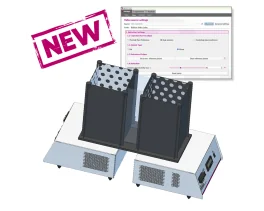Authors
Wang L, Jiang W, Zhao S, Xie D, Chen Q, Zhao Q, Wu H, Luo J, Yang L.
Lab
hanghai Changzheng Hospital, Second Affiliated Hospital of Naval Medical University, Shanghai, , PR China
Journal
Bone Res.
Abstract
Ossification of the Posterior Longitudinal Ligament (OPLL) is a degenerative hyperostosis disease characterized by the transformation of the soft and elastic vertebral ligament into bone, resulting in limited spinal mobility and nerve compression. Employing both bulk and single-cell RNA sequencing, we elucidate the molecular characteristics, cellular components, and their evolution during the OPLL process at a single-cell resolution, and validate these findings in clinical samples. This study also uncovers the capability of ligament stem cells to exhibit endothelial cell-like phenotypes in vitro and in vivo. Notably, our study identifies LOXL2 as a key regulator in this process. Through gain-and loss-of-function studies, we elucidate the role of LOXL2 in the endothelial-like differentiation of ligament cells. It acts via the HIF1A pathway, promoting the secretion of downstream VEGFA and PDGF-BB. This function is not related to the enzymatic activity of LOXL2. Furthermore, we identify sorafenib, a broad-spectrum tyrosine kinase inhibitor, as an effective suppressor of LOXL2-mediated vascular morphogenesis. By disrupting the coupling between vascularization and osteogenesis, sorafenib demonstrates significant inhibition of OPLL progression in both BMP-induced and enpp1 deficiency-induced animal models while having no discernible effect on normal bone mass. These findings underscore the potential of sorafenib as a therapeutic intervention for OPLL.
Source :

 Pain - Thermal Allodynia / Hyperalgesia
Pain - Thermal Allodynia / Hyperalgesia Pain - Spontaneous Pain - Postural Deficit
Pain - Spontaneous Pain - Postural Deficit Pain - Mechanical Allodynia / Hyperalgesia
Pain - Mechanical Allodynia / Hyperalgesia Learning/Memory - Attention - Addiction
Learning/Memory - Attention - Addiction Physiology & Respiratory Research
Physiology & Respiratory Research











![Dynamic Weight Bearing 2.0 – Postural Module [Add-on]](https://bioseb.com/733-home_default/dynamic-weight-bearing-20-add-on-postural-module.jpg)
























 Pain
Pain Central Nervous System (CNS)
Central Nervous System (CNS) Neurodegeneration
Neurodegeneration Sensory system
Sensory system Motor control
Motor control Mood Disorders
Mood Disorders Other disorders
Other disorders Muscular system
Muscular system Joints
Joints Metabolism
Metabolism Cross-disciplinary subjects
Cross-disciplinary subjects CONFERENCES & MEETINGS
CONFERENCES & MEETINGS